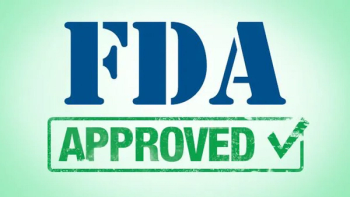
- August 2016
- Volume 10
- Issue 6
The Power of Teamwork: Navigating Patients With Complex Needs
We all have been called on to treat complex patients crystalize how optimal oncology care depends on the collaboration of a multidisciplinary team, and such is the case with this patient transferred to our cancer center’s head and neck division.
Margaret Rummel MHA, OCN, NE-BC
We all have been called on to treat complex patients crystalize how optimal oncology care depends on the collaboration of a multidisciplinary team, and such is the case with this patient transferred to our cancer center’s head and neck division.
PK is a 55-year-old single male diagnosed with squamous cell cancer of the nasopharynx that invaded his skull base. He presented with a 6-week history of visual difficulty, inability to chew on his left side, weight loss, and weakness. He was transferred to our academic medical center for treatment as the hospital where he was diagnosed felt his care would be too complicated to manage.
This patient is of Greek origin and lives in a rural area of a neighboring state with his 85-year-old parents. He speaks English, but his parents do not. He has a history of chronic schizophrenia (controlled with medication), depression, and obsessive compulsive disorder. PK is able to manage his activities of daily living, but needs medication supervision and is unable to live on his own. He is able to make decisions about his care, but at his request, we included his sister in all treatment decisions as she would help communicate with his parents.
It was determined upon discharge that PK’s mass was inoperable, and it was recommended that he receive concurrent chemotherapy and radiation. He had a tracheostomy and feeding tube placed as an inpatient and the nurse navigator (NN) was made aware of the plan that he would be continuing his treatment as an outpatient. Hence, the first team challenge!
Support During Rehab
Upon discharge from the inpatient team, PK was transferred to a rehabilitation facility based on physical and occupational assessments done while hospitalized. He had a high level of skilled needs and would benefit from placement post discharge. The facility that was chosen was part of our healthcare system, which made for an easy transition since he needed to be transported daily for radiation. PK stayed there for 2 months while he completed his radiation.
PK had little social support. His elderly parents were not able to visit him. They did not drive and spoke very little English. He had a brother in a neighboring state, but he was not active in his care. PK has a sister who lived close to the hospital and helped serve as a liaison between PK and his parents, but was unable to care for PK on a full-time basis. His sister did not visit him at any time during his inpatient or rehabilitation hospitalizations. She mainly communicated with PK and with his care team via phone or email.
Much coordination and education was needed while PK was in rehabilitation to make sure that they were aware of the plan of care and that he could be transported for daily treatments. The radiation social worker was instrumental in helping to coordinate transportation with the rehabilitation center since many of his radiation treatments were late in the day. In addition, the NN provided education to the rehabilitation staff on the toxicities of the treatments PK was receiving since they were unfamiliar with oncology patients undergoing active treatment. The multidisciplinary head and neck team met on a weekly basis to discuss PK with the goal of going home at the end of his radiation treatments.
The care transition from to outpatient went smoothly as the rehabilitation facility was within our healthcare system and was used to collaborating regarding patient care. The challenge came when PK was completing his radiation treatments but would need at least 3 more cycles of chemotherapy. Where would he go? Could his parents assume his care?
As the discharge date approached, the NN worked very closely with the case manager and social worker at the rehabilitation center to discuss PK’s transition plan. Multiple plans were looked at, but none came to fruition. The original plan was for him to go home with his parents, but upon assessment of the situation, it was determined that they would not be able to provide the care that he needed.
Where to Go From Here?
PK could not be on his own, nor did he have a caregiver to stay with him so that eliminated many post-discharge facilities such as Hope Lodge or Hosts for Hospitals. Since PK needed additional therapy, the NN was asked to help transition him to a provider closer to home and his case manager/social worker would look for a local facility.
Easier said than done! The case manager looked into several facilities close to PK’s home, but many were unwilling to accept him. The fact that he would be getting IV chemotherapy every 3 weeks for 3 more cycles was a huge deterrent in finding him a facility.
Our cancer program has network affiliates in several surrounding states. I reached out to the navigators at our affiliates close to PK’s home to see if any of them would be willing to accept PK as a patient so we could transition his care. One of our affiliates agreed to assume his care. Now the challenge was to find him a place to live that was close to the provider and to coordinate the transition of his care. The NN at our network site provided some facility options for us to look into but none panned out.
The case manager and SW at the rehabilitation site looked into many additional facilities, most of which would not accept him due to ongoing chemotherapy. We came up with a plan that if the rehabilitation team found a facility that would consider PK, the NN would reach out to them to explain the plan of care, especially regarding chemotherapy and to provide education as to what to expect if they decided to accept him.
Many of the facilities were afraid to take PK, as they did not understand his chemotherapy and actually thought they would be administering it. After speaking with several facilities, one finally agreed to accept him, and the NN worked very closely with the new facility, PK’s sister, his multidisciplinary team, his new provider, the local NN, and the rehabilitation center to provide education related to his plan of care and to coordinate his transition of care, so that he could continue his treatments.
The transition was extremely smooth, and PK is doing well in his new facility. He is tolerating his treatments, and his parents are visiting on a regular basis. He will be seen in follow-up at the cancer center in 4 months, and we will continue to collaborate with his local team.
It truly took a village to care for PK but we achieved our goal of getting him treated closer to home and being able to reconnect him with his parents who were his support system.
Margaret Rummel is an oncology nurse navigator at the Abramson Cancer Center in Philadelphia, Pennsylvania.
Articles in this issue
about 9 years ago
Identifying Patients and Families at Risk for Cancerabout 9 years ago
Meetings of the Minds to Improve Cancer Careabout 9 years ago
Helping Caregivers and Families Feel More Able to Manageover 9 years ago
What Oncology Nurses Can Learn From Patients With Sarcoma

















































































